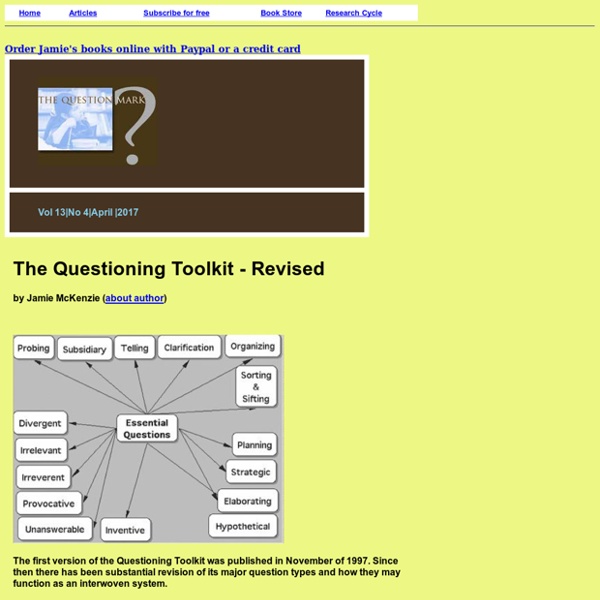Game of Awesome / Teaching & learning resources / Success for Boys - Success for Boys
Game of Awesome is a card game for 3-6 players designed to engage and inspire kids, specifically boys, to tell stories and learn to write. Playing the game helps students generate ideas quickly which they can explore, expand and write stories. The basic game has been produced as four sets of cards containing topics, themes and ideas that students years 5-8 will find interesting, involving and often ridiculous! The cards can be used independently or mixed and matched to create new combinations and infinitely more ideas.
32 Animated Videos by Wireless Philosophy Teach You the Essentials of Critical Thinking
Do you know someone whose arguments consist of baldly specious reasoning, hopelessly confused categories, archipelagos of logical fallacies buttressed by seawalls of cognitive biases? Surely you do. Perhaps such a person would welcome some instruction on the properties of critical thinking and argumentation? Not likely? Well, just in case, you may wish to send them over to this series of Wireless Philosophy (or “WiPhi”) videos by philosophy instructor Geoff Pynn of Northern Illinois University and doctoral students Kelley Schiffman of Yale, Paul Henne of Duke, and several other philosophy and psychology graduates. What is critical thinking?
The Critical Thinking Skills Cheatsheet [Infographic]
Critical thinking skills truly matter in learning. Why? Because they are life skills we use every day of our lives. Everything from our work to our recreational pursuits, and all that’s in between, employs these unique and valuable abilities. Consciously developing them takes thought-provoking discussion and equally thought-provoking questions to get it going.
Control Alt Achieve: Black Out Poetry with Google Docs
March 21st is World Poetry Day, so this is a good time to revisit some ideas for creative ways for students to write poems. In the past I have shared activities for Random Writing Prompts for Poems, as well as drag-and-drop "magnetic" poetry templates in a Winter Theme and a Valentine's Day Theme. Another fun way to engage students in poetry is by having them create "Black Out" poems. Basically you give the student a page of text pulled from a book, article, websites, or such. The student then blacks out all of the text, except for the words they want to leave behind to form a poem.
10 Team-Building Games That Promote Critical Thinking
10 Team-Building Games That Promote Critical Thinking by TeachThought Staff One of education’s primary goals is to groom the next generation of little humans to succeed in the “real world.”
Top 40+ questions to ask before embarking on any change
Organizational change management checklist Change management: why, how, what, when, who Companies increasingly face competitive pressures related to rapid and continuous adaptation to a complex, dynamic and highly interconnected global environment. When embarking on a change journey – what questions to ask
A Summary and Analysis of the ‘Rumpelstiltskin’ Fairy Tale
A curious introduction to a classic fairy story How old do you think the story of Rumpelstiltskin is? It was famously included in the 1812 volume Children’s and Household Tales by the Brothers Grimm (a book that’s better known as Grimms’ Fairy Tales), but many of the tales written down by the German siblings were of a considerable vintage by then. The surprising thing is that the story of Rumpelstiltskin – albeit under a different name – is thought to be some 4,000 years old. To put that in perspective, that’s over a thousand years before Homer, and roughly contemporaneous with the earliest surviving versions of the tales that comprise the Epic of Gilgamesh, widely regarded as the oldest epic.
edutopia
Editor's note: This post is co-authored by Nancy Frey, a Professor of Literacy in Educational Leadership at San Diego State University and a credentialed special educator, reading specialist, and administrator. Questions are a common way for teachers to check for understanding, right? The answer we’re looking for is "yes." Who hasn't questioned a group of students to determine whether or not they understood the content? Unfortunately, not all questions are created equally.
How memories form and how we lose them - Catharine Young
Memory: It isn’t just something, it's everything. And although scientists have pursued and puzzled over it for centuries, a definitive explanation of the actual memory process still eludes us--partly because our brain is so incredibly complex (it is made up of approximately 90 billion cells after all!). Let’s take a look at the basic neuroanatomy elements, which makes memory possible. Brain cells, called neurons are the core component of the nervous system and have the remarkable ability to communicate with each other and transfer information.
@mrocallaghan_edu
image via @gapingvoid Challenge (includes differentiation) Explanation



